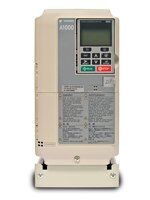In commercial and industrial applications, electric motors are essential for a wide range of machinery and equipment. The main methods for starting, running, and stopping these motors include direct-on-line (DOL) starters, star-delta starters, auto-transformer starters, soft starters, and variable frequency drives (VFDs). Here’s an overview of each method along with their advantages and disadvantages:
Direct-On-Line (DOL) Starters
Starting Method: The motor is connected directly to the power supply, allowing full voltage to be applied to the motor terminals.
Advantages:
- Simplicity: Easy to install and operate.
- Cost-effective: Low initial cost.
- Full Torque: Provides full starting torque.
Disadvantages:
- High Inrush Current: Causes a large surge in current, which can affect the power network and reduce the motor’s lifespan.
- Mechanical Stress: Sudden application of full voltage can cause mechanical stress on the motor and the driven equipment.
Star-Delta Starters
Starting Method: The motor initially starts in a star (Y) configuration, reducing the voltage and current. After a brief period, it switches to a delta (Δ) configuration for normal operation.
Advantages:
- Reduced Starting Current: Lower inrush current compared to DOL.
- Less Mechanical Stress: Gradual increase in torque reduces mechanical stress.
Disadvantages:
- Complexity: More complex than DOL, requiring additional components and wiring.
- Torque Dip: Temporary reduction in torque during the transition from star to delta.
Auto-Transformer Starters
Starting Method: An auto-transformer reduces the voltage applied to the motor during startup. After starting, the motor switches to full line voltage.
Advantages:
- Controlled Start: Reduces starting current more effectively than star-delta starters.
- Adjustable Voltage: Allows for different voltage taps to control starting characteristics.
Disadvantages:
- Cost: More expensive than DOL and star-delta starters.
- Size and Weight: Larger and heavier due to the auto-transformer.
Soft Starters

AuCom EMX3 Soft Starter
Starting Method: Gradually increases the voltage to the motor, providing a smooth start. It uses solid-state devices to control the voltage applied.
Advantages:
- Smooth Start: Reduces inrush current and mechanical stress.
- Adjustable: Allows precise control over acceleration and deceleration.
Disadvantages:
- Heat Dissipation: Solid-state devices can generate significant heat.
- Cost: More expensive than mechanical starters like DOL and star-delta.
Variable Frequency Drives (VFDs)

Yaskawa A1000 AC Drives
Running and Stopping Method: VFDs control the motor speed by varying the frequency and voltage of the power supply. They also provide controlled acceleration and deceleration.
Advantages:
- Energy Efficiency: Optimizes energy consumption by matching motor speed to the load requirements.
- Precise Control: Allows precise control of motor speed and torque.
- Smooth Operation: Reduces mechanical and electrical stress on the motor.
Disadvantages:
- Complexity: Requires more complex setup and programming.
- Cost: Higher initial cost compared to other starters.
- Harmonics: Can introduce harmonics into the power system, requiring additional filtering.
Comparison Summary
- DOL Starters: Simple and cheap, but high starting current and mechanical stress.
- Star-Delta Starters: Reduced starting current, but complex with a torque dip during transition.
- Auto-Transformer Starters: Controlled and adjustable start, but expensive and bulky.
- Soft Starters: Smooth start and reduced stress, but can generate heat and are costly.
- VFDs: Energy-efficient with precise control, but complex and expensive, with potential harmonic issues.
Each method has its own set of advantages and disadvantages, making them suitable for different applications based on specific operational requirements and constraints.


Leave A Comment
You must be logged in to post a comment.